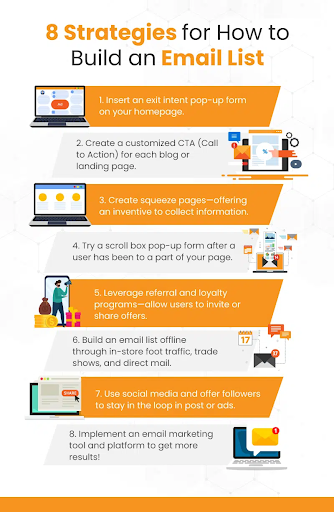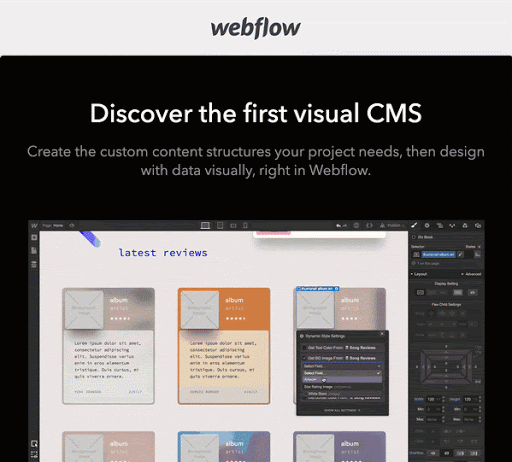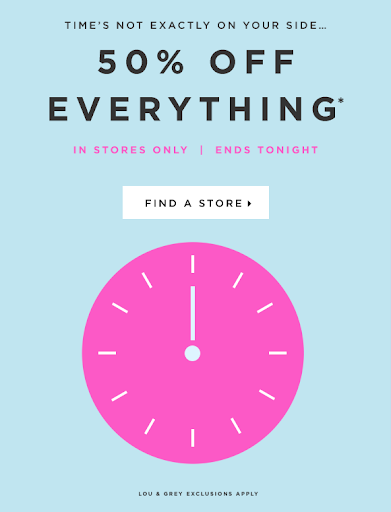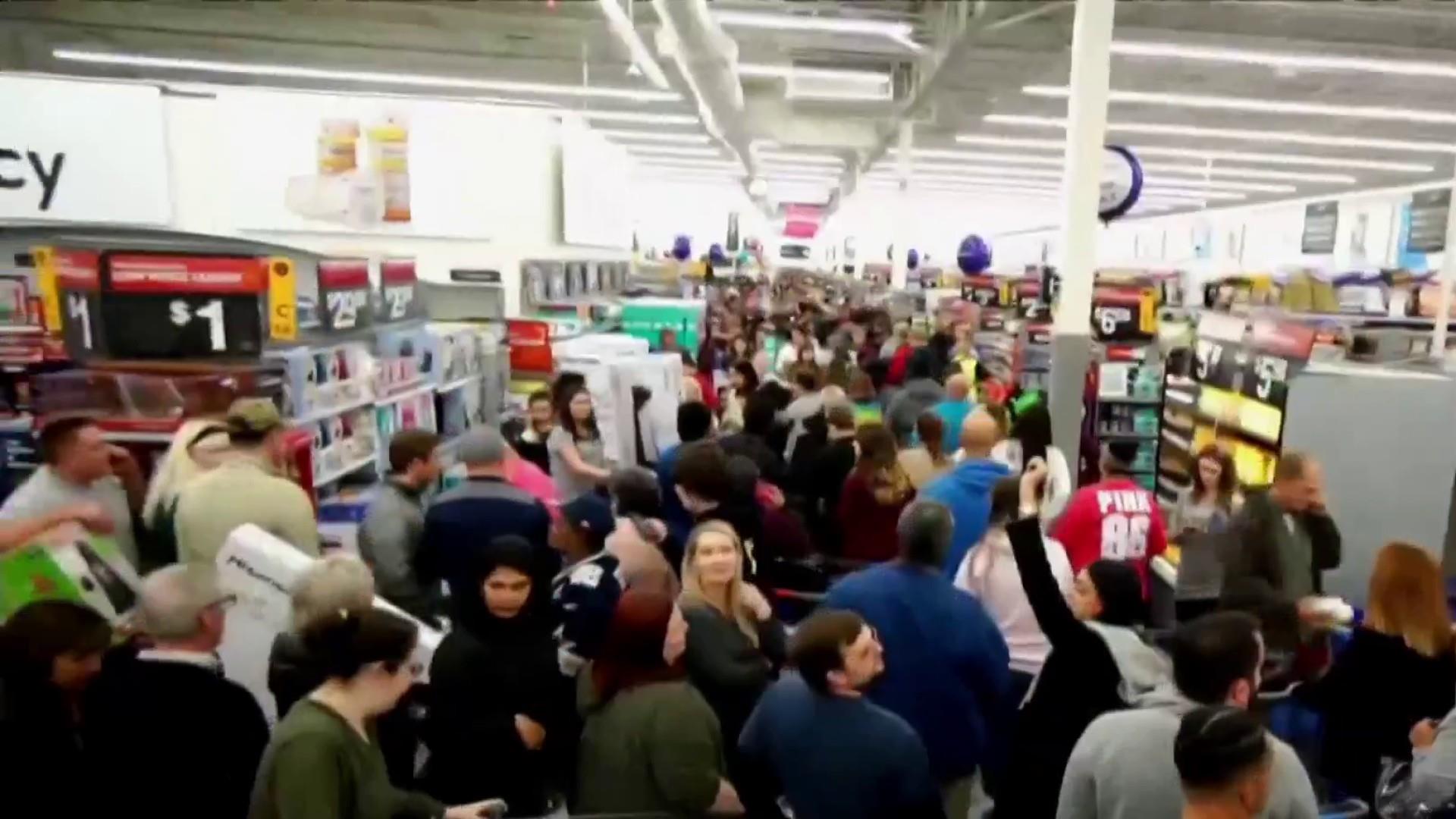Can you feel it in the air?
The onset of fall tells business owners that the most crucial time of the year has arrived: Black Friday and all the sales frenzy that goes with it.
In fact, in 2021, Black Friday sales were forecast to exceed 10 billion dollars, a whopping increase of 21% compared to the previous year.
Depending on how prepared you feel, this can bring angst or hopeful anticipation.
You already know this is a vital opportunity to spread the word about your brand — and and you’ve discussed at many team meetings that you’ll need a well-planned email marketing campaign to make it happen.
But the number of things to consider when developing this strategy can be staggering: choosing resources, selecting and generating content, deciding when to offer discounts, connecting with your audience, keeping the format user-friendly, and more!
We’re here for you with this handy guide.
Ready to learn more?
Here are the six most important strategies for developing successful email marketing campaigns to kick off the holiday season.
1. Plan your campaigns early
Automate your workflow by sending out email campaigns about two months before Black Friday.
Trends and patterns vary from one industry to another, so, it’s important to identify the available tools and consider the best ways to use them to engage your customers.
Here are three best practices to keep in mind:
Build up and use your email list
Ideally, if you’re a retailer, you’ve already been building up a customer email list through loyalty programs or other promotions.

Early October is the perfect time to begin reaching out to these recipients with strategic waves of emails promoting your seasonal offers.
Employ intelligent technology
Consider using email automation to connect your digital marketing campaigns with data from online store activity to create personalized messaging.
The optimized suggestions and content this creates can help you create messaging that’s tailored to your audience, ensuring your ideal customer feels seen and heard.
Today with the new AI technology, you can generate and optimize content or build chatbots that can retain your customers and increase the conversion rate.
Know your industry specific-tools
Every industry has its own unique resources. Becoming familiar with them and putting them to use at the right time is essential.
For example, if you’re in the real estate business, you can prepare your email marketing campaigns using the IDX (Internet Data Exchange) to make sure your listings are up-to-date and properly distributed.
There are also many free marketing tools from Google that you can add to your toolbox to help your business grow and scale.
This allows you to embed the most current information regarding your properties so you can create email marketing campaigns with your unique audience in mind.
2. Include a discount code
Gaining an audience for your email marketing campaign is an important first step. But some of these interested prospects may need an extra nudge to convert into customers.
Budget-conscious recipients may especially need a little extra motivation. In fact, 55% of online shoppers abandon their shopping carts because costs are too high when they go to pay out.
Black Friday discount codes, BOGO deals, and timed offers strategically placed within your email campaigns can make a huge difference.

Not only can these goodies help get a transaction over the finish line, but they can help promote customer loyalty. Who doesn’t want juicy discounts emailed to them for products they enjoy buying the most?
3. Tailor your email campaigns to your audience
Personalized email marketing is all about helping your customers feel seen.
The rise of people-based marketing (PBM) has normalized the expectation that consumers will interact best with online retailers that tailor their messaging to audience preferences and buying patterns.
That’s why we recommend using segmented campaigns to target individual audience segments. This means analyzing the different demographics represented by your email list and crafting messages customized for each of them.
Employing a customer relationship management (CRM) system can make it easy to identify the most important market segments to target.
When creating or choosing resources for your email campaigns, remember that the details matter! For example, behind a good and creative email content marketing campaign is an even better email subject line.
Other best practices include:
- Addressing recipients by their first name
- Using language in line with their messaging preferences
- Highlighting offers they’ve shown interest in in the past
- Addressing a pain point head-on and providing a solution to it
4. Repurpose past campaigns
It’s important to keep a few email marketing campaigns in reserve for emergencies or last-minute content.
This is also a great way to make sure you’re drawing the maximum amount of value out of the investments you’ve already made in your marketing.
Here are some ways to repurpose past campaigns:
- Feature “Best Sellers” showcases: Gather best-selling products or services to exhibit in a “best sellers” or “popular items” newsletter.
- Creatively redistribute user-generated content: Feature collections of social media posts or testimonials from customers who love what you do.
- Curate collections: Identify themes within your existing content that are seasonal, responsive to current events, or simply released in regular intervals (weekly, monthly, etc.) Link this content together in an email newsletter. This not only gives previously posted content new life, but it also provides your audience a chance to catch up on promotions or announcements they may have missed.
5. Optimize your emails for mobile
With the percentage of users viewing content on mobile devices trending sharply upward, it’s more important than ever to keep mobile device optimization in mind when creating promotional materials.
Here are some easy ways you can optimize emails for mobile devices:
- Make the most of pre-header text: This is the first line of your email that appears after the subject line. Make sure that it engages your reader right away!
- Keep your copy succinct and to the point: Your message should be easy for readers to skim, scan, and understand.
- State your call to action (CTA) early and give your reader easy ways to engage: Use text and images that are sized and formatted for easy clickability. Hint: use a responsive email template! Keep your message actionable, clear, and easily accessible.
6. Use GIFs in your emails to make them more dynamic
GIFs are a fun way to share a laugh. But they can also play a huge role in effective email marketing. These simple, moving images are a great way to make your message more engaging.

Custom-made GIFs are also a friendly alternative to video content if you need to visually explain a new process, such as a new website feature or promotional event.
Black Friday Emails From Popular Brands
And now, before we bid you adieu, let’s take a quick look at three Black Friday email examples from popular brands you can use for inspiration.
Example 1: Lou & Grey puts the pressure on with a timed promo
The following Black Friday email campaign is clean, simple, to the point, and best of all: It puts pressure on the reader with the “time’s not exactly on your side” line, nudging them closer to conversion.

In this example, Lou & Grey also offers a healthy 50% discount, making the promo that much more irresistible to the reader.
One thing we’d do a bit differently, though?
Swap “Find a Store” with “Start Shopping Now”.
Shoppers that are in a hurry may not have the patience to be connected to the proper store prior to purchase.
Using language that inspires them to shop now helps remove unnecessary barriers to entry and gets them one step closer to shopping. Just be sure your server is set up to automatically direct shoppers to the proper store after it identifies their correct location.
Example 2: Sephora makes shopping quick and easy
We love how easy Sephora makes it to say “yes” to shopping in this branded and strategically designed email campaign.

Shoppers can quickly buy products using the “Shop Now” button, check store hours if they prefer to shop in person, and they even have highlighted product bundles and super cheap deals to choose from.
The only issue with this email campaign? It speaks to one specific audience segment: People that identify as women.
To make its Black Friday campaigns stronger, Sephora should consider creating a different campaign and product recommendations for each audience segment it caters to.
That may mean:
- One campaign targets people that identify as women
- Another campaign targets people that identify as men
- A third campaign targets non-binary shoppers
- And a fourth campaign targets teens and young adults
Example 3: Walmart shares Pre-Black Friday deals
Walmart aims to stay ahead of the game by offering shoppers Black Friday deals before the official holiday begins.

Walmart divides up pre-deals by category, making it easy for shoppers to save on items they were already planning on buying.
But, what could’ve Walmart done differently?
While we appreciate the deal categories, shoppers that aren’t interested in a particular category may feel overwhelmed by the number of department options. Yes, there are two other opportunities to shop using the “Shop now” buttons, but unfortunately, the buttons are small and blend in with the design.
Which brings us to our last complaint … the design. The visuals in this campaign are a bit cluttered, making it challenging for shoppers to focus on what matters most: The opportunity to buy something, quickly and easily.
A cleaner design with more visibly accessible shop buttons can take this campaign from good to great.
Wrap up
So, take a deep breath of crisp, fall air and relax.
If you’ve planned using the right tools, made intentional choices about your customer’s experience, and maximized your content for engagement and efficiency, then you’re ready to make the most out of this critical time of year.
Use these tips to create email marketing campaigns that’ll improve your sales on Black Friday.
To your success!
About the author
Shane Barker is a digital marketing consultant who specializes in influencer marketing, content marketing, and SEO. He is also the co-founder and CEO of Content Solutions, a digital marketing agency. He has consulted with Fortune 500 companies, influencers with digital products, and a number of A-List celebrities.
Don’t forget to share this article

